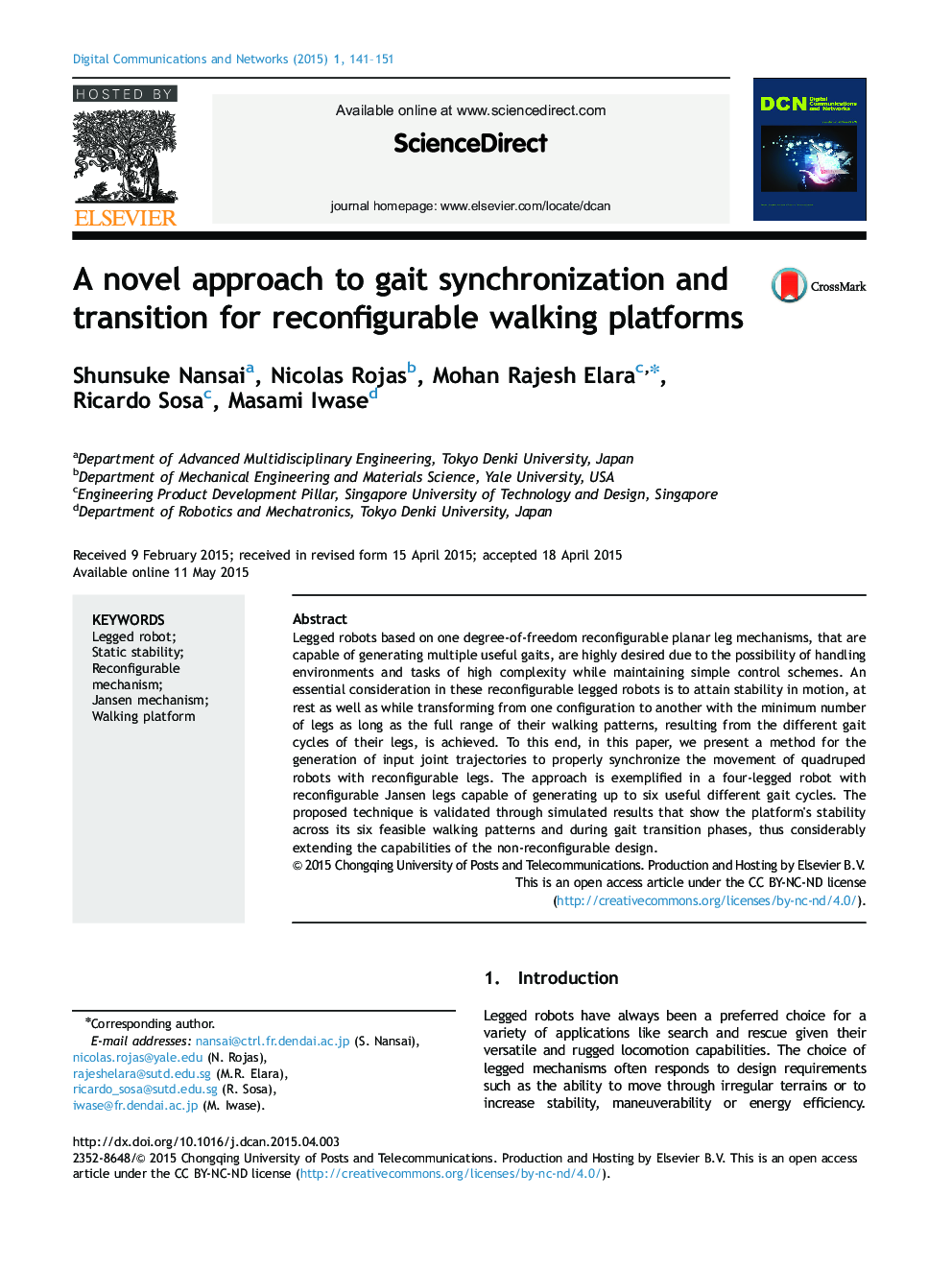| Article ID | Journal | Published Year | Pages | File Type |
|---|---|---|---|---|
| 704560 | Digital Communications and Networks | 2015 | 11 Pages |
Legged robots based on one degree-of-freedom reconfigurable planar leg mechanisms, that are capable of generating multiple useful gaits, are highly desired due to the possibility of handling environments and tasks of high complexity while maintaining simple control schemes. An essential consideration in these reconfigurable legged robots is to attain stability in motion, at rest as well as while transforming from one configuration to another with the minimum number of legs as long as the full range of their walking patterns, resulting from the different gait cycles of their legs, is achieved. To this end, in this paper, we present a method for the generation of input joint trajectories to properly synchronize the movement of quadruped robots with reconfigurable legs. The approach is exemplified in a four-legged robot with reconfigurable Jansen legs capable of generating up to six useful different gait cycles. The proposed technique is validated through simulated results that show the platform׳s stability across its six feasible walking patterns and during gait transition phases, thus considerably extending the capabilities of the non-reconfigurable design.
